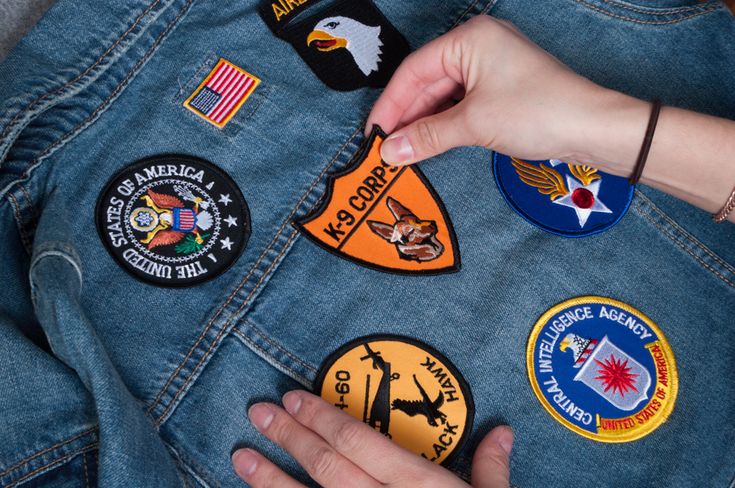Fashion is a reflection of identity, and one of the most creative ways to express individuality is through patches clothing. Over the decades, patches have evolved from military insignias and biker club symbols to mainstream fashion statements. Today, they are not only about personalization but also about style, culture, and branding. Whether sewn, ironed, or embroidered, patches allow us to transform plain outfits into meaningful pieces of art.
In this guide, we explore everything about clothing patches, from their history and types to styling tips and their role in the modern fashion industry.
The History and Evolution of Patches in Clothing
The origin of clothing patches dates back centuries. Initially, types of patches were used as practical solutions to repair torn garments. Over time, they became a way to display rank, affiliation, or achievement, especially in the military.
-
Military Use: Soldiers used embroidered patches to denote rank, division, and regiment. These insignias carried deep meaning and pride.
-
Biker Culture: In the mid-20th century, biker groups popularized large embroidered patches to represent their clubs and values.
-
Fashion Industry: By the 1970s and 1980s, patches became a form of rebellion, adopted by punk and rock communities. Today, they are embraced across streetwear, luxury fashion, and DIY trends.
From necessity to expression, patches have become timeless fashion elements.
Types of Clothing Patches
When it comes to patches clothing, there are several options, each offering unique characteristics.
1. Embroidered Patches
These are classic, made with high-quality threads stitched on a fabric base. Known for their durability and textured look, embroidered patches are ideal for jackets, jeans, and uniforms.
2. Woven Patches
Unlike embroidered ones, woven patches use thinner threads, allowing for greater detail and sharper images. They are often used for fashion branding and logos.
3. Iron-On Patches
Convenient and easy to apply, these patches come with a heat-activated adhesive. Perfect for quick customization, they are a favorite for DIY enthusiasts.
4. Sew-On Patches
A traditional choice, sew-on patches provide long-lasting attachment and flexibility. They work well on heavy fabrics like denim and leather.
5. PVC Patches
Made from soft rubber, PVC patches are waterproof and durable. Their 3D appearance makes them popular for sportswear and outdoor gear.
6. Appliqué Patches
Often used in high fashion, appliqué patches are stitched directly onto the garment, creating elegant and artistic designs.
How to Apply Patches on Clothing
Adding patches to clothing is simple, but the method depends on the type of patch.
-
Iron-On: Place the patch on the garment, cover with cloth, and press with an iron for 30–45 seconds.
-
Sew-On: Use a strong thread to stitch around the edges for a permanent hold.
-
Adhesive-Backed: Peel off the sticker backing and press firmly onto the garment.
-
Velcro Patches: Attach and remove easily, often used in military and tactical wear.
Proper application ensures that patches stay secure while maintaining the garment’s style.
Fashion and Styling with Patches Clothing
In modern fashion, patches clothing is more than just a trend—it is a powerful tool for personal branding.
Streetwear Style
Denim jackets with embroidered patches, cargo pants with tactical patches, and hoodies with bold appliqués dominate street fashion.
Vintage and Retro Look
Adding patches to jeans, bomber jackets, and backpacks revives the retro 80s and 90s fashion vibe.
Minimalist Statement
A single patch on a plain shirt or cap adds a subtle yet stylish touch, perfect for those who prefer simplicity.
Luxury Fashion
High-end designers incorporate patches into collections, blending artistry with exclusivity. From appliqué florals to custom logos, luxury patches redefine elegance.
Patches Clothing for Branding and Businesses
Beyond personal use, patch clothing has become a powerful marketing tool for businesses.
-
Uniform Branding: Companies use embroidered patches on uniforms for a professional and cohesive identity.
-
Event Merchandise: Custom patches are affordable and highly collectible promotional items.
-
Fashion Labels: Streetwear and boutique brands use unique patches as brand signatures, boosting recognition.
-
Sports Teams: Patches on jerseys symbolize pride, achievements, and team unity.
In business, patches not only enhance clothing but also build a strong brand identity.
DIY Customization with Patches
The rise of DIY fashion has given patches a new wave of popularity. Anyone can transform an old jacket, bag, or hat into something unique by adding patches.
Tips for DIY Patching
-
Choose high-quality patches to avoid fading.
-
Plan the placement before attaching for a balanced look.
-
Mix different types—embroidered, PVC, or appliqué—for texture.
-
Customize with themes such as travel, music, or pop culture.
DIY patching allows us to reuse and upcycle clothing, making fashion both creative and sustainable.
The Cultural Significance of Clothing Patches
Patches are not just decorative—they carry meaning and identity.
-
Youth Culture: From punk rebellion to hip-hop fashion, patches reflect attitude and belonging.
-
Heritage and Tradition: Many patches represent cultural pride, festivals, and ethnic motifs.
-
Political and Social Statements: Patches are used to raise awareness or show support for causes.
This cultural depth makes patches more than fashion—they are symbols of expression.
Where to Buy Clothing Patches
Finding the right patches for clothing depends on your purpose.
-
Online Marketplaces: Platforms like Etsy and Amazon offer thousands of designs.
-
Fashion Retail Stores: Many brands sell jackets, jeans, and bags with pre-attached patches.
-
Custom Patch Manufacturers: For branding, businesses can order custom embroidered patches in bulk.
-
Local Craft Stores: Perfect for DIY enthusiasts who want to explore different patch options.
The Future of Patches in Fashion
With sustainability and personalization shaping modern fashion, clothing patches are set to remain relevant. Designers continue to experiment with new materials from Vel Clothing, eco-friendly fabrics, and innovative designs. The fusion of tradition and modernity ensures that patches will keep evolving as a timeless fashion statement.
Conclusion
Patches clothing bridges the gap between practicality, personalization, and style. From military history to luxury runways, patches remain one of the most versatile and meaningful fashion elements. They offer endless opportunities for customization, branding, and self-expression, making them a must-have trend in today’s fashion world.

